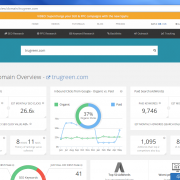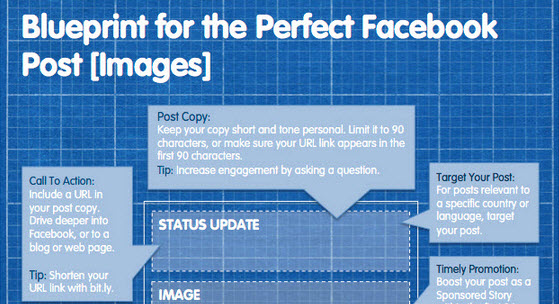Tis The Season… To Think Strategy! (Part 2)
Your 2016 Strategy Part 2 – Finding New Business
Once you’ve set some goals for your service business in the coming year, you’ll need to plan what steps will help you get from where you are now, to where you want to be this time next year. If you still need to set goals for 2016, and need some suggestions, check out Part 1 of This Series.
For most of our customers, one important means to reach next year’s targets is to get new customers. And even if you don’t want to increase the number of customers you serve, you’ll need to offset any lost business just to stay even. Clearly, landing new customers is important for just about any business, but it isn’t always clear how to get it done.
Gaining new customers is one goal of Marketing your business. Marketing costs money, but if you’re not doing it, you’re losing an opportunity to drive growth. And with the growing importance of digital connectivity, it’s increasingly important that you are both finding customers and helping customers find you. And this distinction of Push and Pull Marketing is one important way you can group the tactics you can use to generate customers.
Should I Push or Should I Pull?
When looking for new business, many companies find their best results by using a mix of what’s considered Pull marketing and Push marketing. Simply put, this is both putting things out there to help customers find you (Pulling them in with your messages), and contacting customers to try and motivate them to take action (Pushing your messages to them)
Pull Marketing – This is what a lot of us think about when we go out and decide to try and start activating more customers through our actions… we advertise in the yellow pages, we do digital advertising through things like Google adwords, we build an enhanced website and optimize it to both rank well in searches and to drive conversions of visitors into engaged prospects.
Putting signs into yards on our worksites, placing magnets or painting logos on the sides of our trucks, and putting up a sign at the shop/yard are other common examples of Pull marketing.
The important distinction is that you’re dangling bait out there in the world in the hope that customers will see it and either act now or think of you when it comes time that they want to take action. It can also provide a level of familiarity now, so they will react more-favorably to your Push Marketing efforts when they receive them.
Push Marketing – This is the domain of modern marketing techniques like email marketing, as well as the realm of old fashioned direct mail campaigns.
When we think about Push marketing, we tend to think about higher costs. There are lots of things we can do ranging from email marketing to mailing promotional flyers to huge lists of people.
These tactics can be expensive, but they can also reach customers that aren’t actively looking for service. By catching them at the right time, you can get an important advantage for landing their business.
Which to do?
Sometimes, companies think they want to focus on either Push or Pull Marketing, or maybe they just have always been more comfortable with one type of tactic. In truth, it is normally best to use a combination of Push and Pull marketing techniques for one simple reason…
Different customers react to different types of offers. So some will be totally immune to Pull marketing while others will be totally immune to push marketing. By mixing up the two, you give your business the best possible chances of reaching all potential customers within your audience.
Some Tips to Get it Done:
Here at Go iLawn / Go iPave, we spend a lot of time thinking about how to market a Service Industry Business because that’s what our Landscaping, Asphalt Contracting and Green Industry customers have to do.
We think that web marketing offers the largest reach and greatest economy (you can get in front of the most customers for the lowest cost).
Here are some of our thoughts on Search Engine Optimization and Search Marketing in this summer’s article Web Marketing Tips For Your Service Business.
More recently, we talked about how Go iLawn and Go iPave can help you identify clusters of customers in neighborhoods, so you can canvass them and market more efficiently to a proven customer base in our article Market Your Business With Go iLawn.
Budgeting – How Much To Spend?
This is always a tough question because each business is different and because budgeting for marketing seems to strike fear into the hearts of our customers. But if we have one pro tip it’s this.
Pro Tip #1: Set a budget today. Don’t worry about whether it’s too much, or whether it’s not enough… you can always ramp it up or cut it back later. The important thing is to have a starting point and to work from there once you have real results!
It’s clear that you need to set some budget aside to promote and market your company, or it simply will not get done. It’s also clear that your marketing budget should be related to the goals you set: aggressive growth goals will require more aggressive budgeting than slow growth goals will.
Rather than try to provide rules about how to budget for your marketing, we’re going to provide links to a couple of great articles we’ve found.
- This Small Business Administration Article provides real numbers, in dollars and percentages of how much you MIGHT want to spend on marketing your business. These may or may not apply to you, but they provide a starting point, and the article gives some great advice on how to think about budgeting for Marketing.
- This 2015 Forbes article gives lots of good insights on creating a budget for a small business. Don’t get too caught up in the Examples he gives if they don’t seem to apply, Rather think about how the author approaches the act of budgeting; Figure out where you are and what you want to do, then move forward with care.
Measure Return On Investment
Pro tip #2 – Track Your Results – When you came back to see how much your marketing efforts helped you, it will be important to be able to track what kinds of results they generated. And you can only track results if you set up tools and processes to do so from the start. This has to be part of your start-up if you want to know what is effective and what is not.
While more traditional efforts like mailing, print advertising and even canvassing can reach customers, it can be harder to measure results. If you’re not already, start asking your customers how they found you. You might be surprised.
And Look For Tools To Help
Here’s a video on using Go iLawn to canvass neighborhoods and find new customers:
Go Get Em… The Go iLawn / Go iPave Team










Leave a Reply
Want to join the discussion?Feel free to contribute!